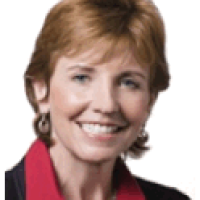Doctors have always played an important role in legalizing abortion. In the 1860s, doctors with the newly formed American Medical Association tried to ban abortion in the United States.
They were doing the exact opposite a century later.
"When states liberalized abortion laws in the 1950s and 1960s," "the charge actually came from doctors who said that "this is insane, we cannot practice medicine, and we can't exercise medical judgment if we're being told that this is off-the-table," "explains Melissa Murray, New York University law professor.
In 1973, Roe v. Wade was decided in favor of doctors by the Supreme Court. Murray states that the majority opinion referred to "the right of a women in consultation with her doctor to choose an abortifaction."
However, doctors and patients are absent in the Supreme Court's latest majority opinion in Dobbs/Jackson Women's Health Organization on abortion. In fact, in the opinion, Justice Samuel Alito uses the derogatory term "abortionist" instead of physician or doctor or obstetrician-gynecologist.
Experts in legal analysis say this signals a significant shift in the court's view of abortion and creates a dangerous new legal reality. Health care providers in states that restrict abortion may have to counsel patients seeking abortions, even those with complications. This could be a dangerous situation for doctors, who might then be treated as criminals.
Mary Ziegler, a University of California, Davis law professor, says that "Alito's framing was that abortion is and has been a crime aEUR". She says there is no doubt that Roe will be overruled in the short-term. This will result in the criminalization and prosecution of doctors.
Roe v. Wade, the court's landmark abortion ruling, was centered on doctors.
Ziegler, who is an expert on the legal history and law of abortion, says that "The original Roe decision was very, very doctor-centered." "This was a right that was very much about healthcare and the doctor-patient relationship at its inception."
Roe and subsequent abortion decisions, such as Planned Parenthood in v. Casey, "had a framework that abortion is some kind of individual right, however it's also a health care," says Carmel Shachar, executive Director of the Petrie-Flom Center for Health Law Policy, Biotechnology, and Bioethics, Harvard Law School.
"You can place restrictions on abortion services and provider qualifications just like you do for other forms of health care. As long as they aren't so onerous as we think they're implicating Roe & Casey, they're fine with us," Shachar states.
She says that the apparatus of health regulation was used by state legislatures to limit abortion.
These restrictions include waiting periods, informed consent laws and telemedicine restrictions.
Ziegler states that the attempt to limit abortion by medically unnecessary regulations aEUR was "concurrently, I think," Ziegler said.
She notes that these regulations were often designed to restrict the way doctors perform abortions in a more strict manner than other areas. The anti-abortion movement was essentially structured as "We're protecting women against the 'abortion business' by regulating how abortion providers work." "
Ziegler states that a more recent abortion decision, aEUR' Gonzales v. Carhart from 2007, aEUR", previewed the Supreme Court's shift away from deferring in abortion to doctors. The legality of "partial birth abortion", a technique used to perform late-term abortions that Congress had banned in 2003, was at stake.
She says, "The battle in that case was whether doctors get to determine what this procedure is and if it's necessary for patients or Congress does." "The Supreme Court basically said that if there is any disagreement about science, aEUR" legislators can break the tie.
Dobbs is the Supreme Court's latest abortion decision. She says that it's "an even greater breach because there's no pretense of caring for doctors."
The Dobbs opinion supporters don't consider the absence of doctors to be an omission. After the decision was made public, Dr. Christina Francis of Association of Pro-Life Obstetricians and Gynecologists stated that abortion "really doesn’t have any place” in medicine. The group filed an amicus brief in Dobbs' case. It urged the court not to overturn Roe V. Wade.
Alito's opinion for the majority quotes the Mississippi law prohibiting abortion after 15 weeks. This Mississippi law called abortion "a barbaric procedure, dangerous for the mother and demeaning for the medical profession."
Ziegler claims that the idea of abortion being not medicine and not health care has been around for many years. It was ignited in 1980s by Bernard Nathanson, an abortion doctor, who had a religious and political conversion.
She explains that Aborting America was a book written by him in the 1980s. It was called an "exposA(c)," which he described as an expose of the "abortion industry." The anti-abortion movement aEUR really liked that term. It essentially stated that abortion was a profit industry, much like the tobacco industry.
This idea is still powerful, and Dobbs can attest to its power. Alito's view reflects the notion that "abortion providers don't count as doctors in the usual sense aEUR", that they were once considered criminals, and that what they are doing is not protected.
Alito's views are strongly opposed by many doctors and legal experts. The court heard from two dozen medical organizations, including the American College of Obstetricians and Gynecologists and American Medical Association. They stated that abortion is an important part of reproductive health care and that it is safe. Doctors should be free to treat patients without interference from the government.
Molly Meegan is chief legal officer and general counsel for ACOG. She says that she believes the "failing to consider the needs of the pregnant person as well as the clinicians who treat them" was an egregious failure. She also said that the usage of the term "abortionist", in the opinion, was "inflammatory, inaccurate" aEUR. These are doctors, providers, and medical professionals.
Shachar at Harvard disagrees with Alito's "history-and-traditions" approach to determining that abortion is not protected. He focuses on statutes dating back to the 19th Century.
She says, "Medical care has changed so dramatically from EUR" bite a bullet we'll amputate you leg." It's shocking to say that "We must go by the historical conception" when everyone has agreed that they want modern societies that provide medical care and don't treat women as chattel.
Michele Goodwin directs the Center for Biotechnology and Global Health Policy (UC Irvine). She says Dobbs and state abortion laws which can now take effect single doctors who perform abortions "for disparate treatments amongst many other types of care."
She says, "That would be one thing, if these were actually very risky procedures that lead to high rates of death, but in reality, it's the exact opposite." She adds that abortion is extremely safe and that it can lead to 14 times more deaths than an abortion. She says that doctors who perform abortions are "absolutely essential" in providing reproductive health care.
As they attempt to navigate the new legal environment, doctors who perform abortions face a lot of difficulties, particularly when a pregnant woman is ill or has complications. You could be sued, lose your medical license and even go to jail if you intervene. You could endanger the life of your patient and even be sued by them or their family.
Meegan from ACOG says, "We are hearing our doctors on ground at all hours of the day and night." "They are afraid, they are trapped in an impossible situation and they don’t know how to interpret laws that are changing by the minute."
Dr. Katie McHugh, an OB-GYN, provides care in labor and delivery as well as abortion care at various clinics throughout Indiana. In Indiana, abortion is still legal. She has seen an influx of patients from Kentucky, Tennessee, and Ohio since the Supreme Court decision. To be able to help these patients, she's keeping track of the laws in neighboring states.
She says, "We're trying very, very carefully." I am certain that I made a mistake, especially as the world is changing. It is frightening to me to realize that I'm now not only worried about my patients' safety but also about my legal safety.
She adds that "the criminalization of patients and providers is incredibly disruptive for just normal patient care."
The legal landscape is constantly changing. Some bans have been blocked by courts, while others are in effect. State legislators are creating new restrictions. Many of the laws in force are confusing and unclear. Doctors warn that this could have a negative impact on care, beyond abortion care, such as miscarriage treatment and treatment for ectopic pregnancies, and many other services.
There is a possibility that doctors' associations like ACOG and American Medical Association get involved in the legal battle here and play a part in pushing for abortion laws to be liberalized, as they did in decades past.
Meegan says that "I believe that medical societies have responsibility and an influence that ought to be used now." Meegan notes that the AMA has recently passed a resolution that recognizes abortion as a human rights and that there are many organized medical groups that work together to fight against medical care being criminalized.
Ziegler notes that doctors have not led recent legal and political mobilizations about abortion. "Historically doctors were a major reason abortion was made illegal. If they're going to do it again, I believe the medical profession must be more vocal and united in discussing this issue than it has been.













